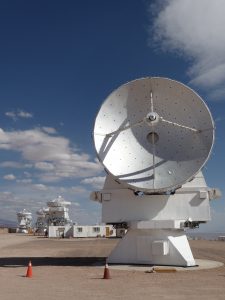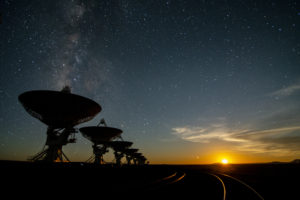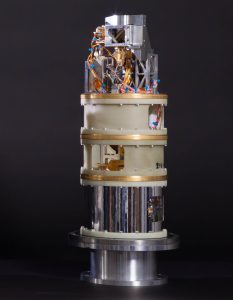A VLA antenna being transported alongside a patch of blooming wildflowers on the Plains of San Agustin.


ALMA’s Japanese 7-meter Antennas
These antennas are the 7-meter antennas built by our Japanese partners. All together, there are 12 of these smaller antennas that are all located close to the center of the overall array. They work in conjunction with four other 12-meter antennas to form the Atacama Compact Array (ACA). Because of the extremely close spacing, the ACA is able to very accurately simulate a single antenna and image very faint objects visible in the millimeter/submillimeter part of the electromagnetic spectrum.

VLA Antennas and The Barn
The Antenna Assembly Building, more commonly referred to as The Barn, houses any antenna that needs to undergo maintenance. The antenna to the left of the image is seated on the Master Pad, a testing station that verifies the antenna is working properly.

Moonset at the VLA
Moonset — around 2:30 a.m. — at the Very Large Array on the Plains of San Agustin, about 50 miles west of Socorro, New Mexico.

North American ALMA Antenna and Stars
A close up shot of one of the 25 North American ALMA antennas at night under the incredibly clear skies of the Atacama Desert.

ALMA’s Band 10 Receiver
Pictured here is one of the cold cartridge assemblies of the Band 10 receiver, which gives ALMA its highest-frequency capabilities. The Band 10 receiver can only be used under ideal conditions when there is minimal water vapor present in the atmosphere above the already arid Atacama Desert. Use of this receiver recently allowed astronomers to detect steams of heavy water (HDO) and complex molecules in a region of the Cat’s Paw Nebula.





